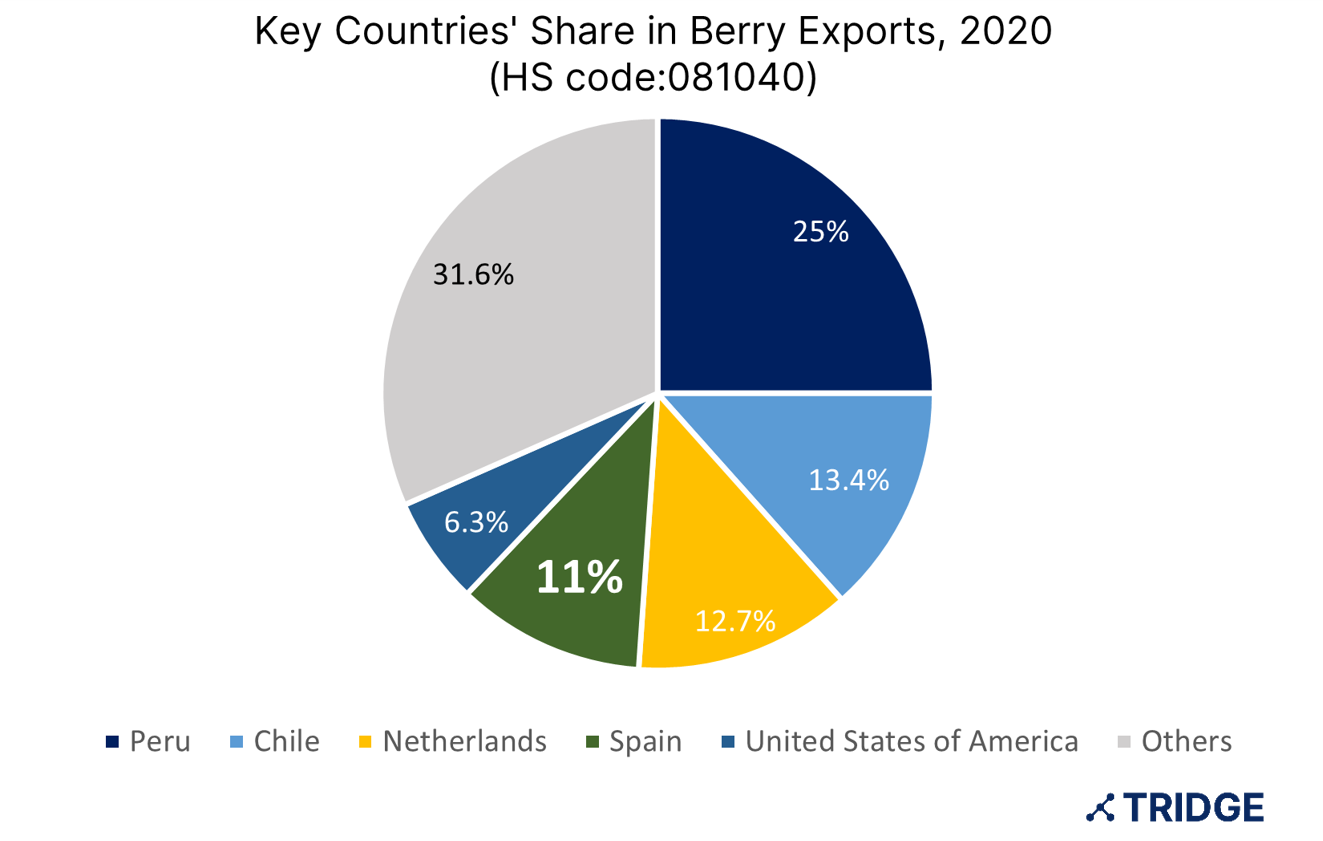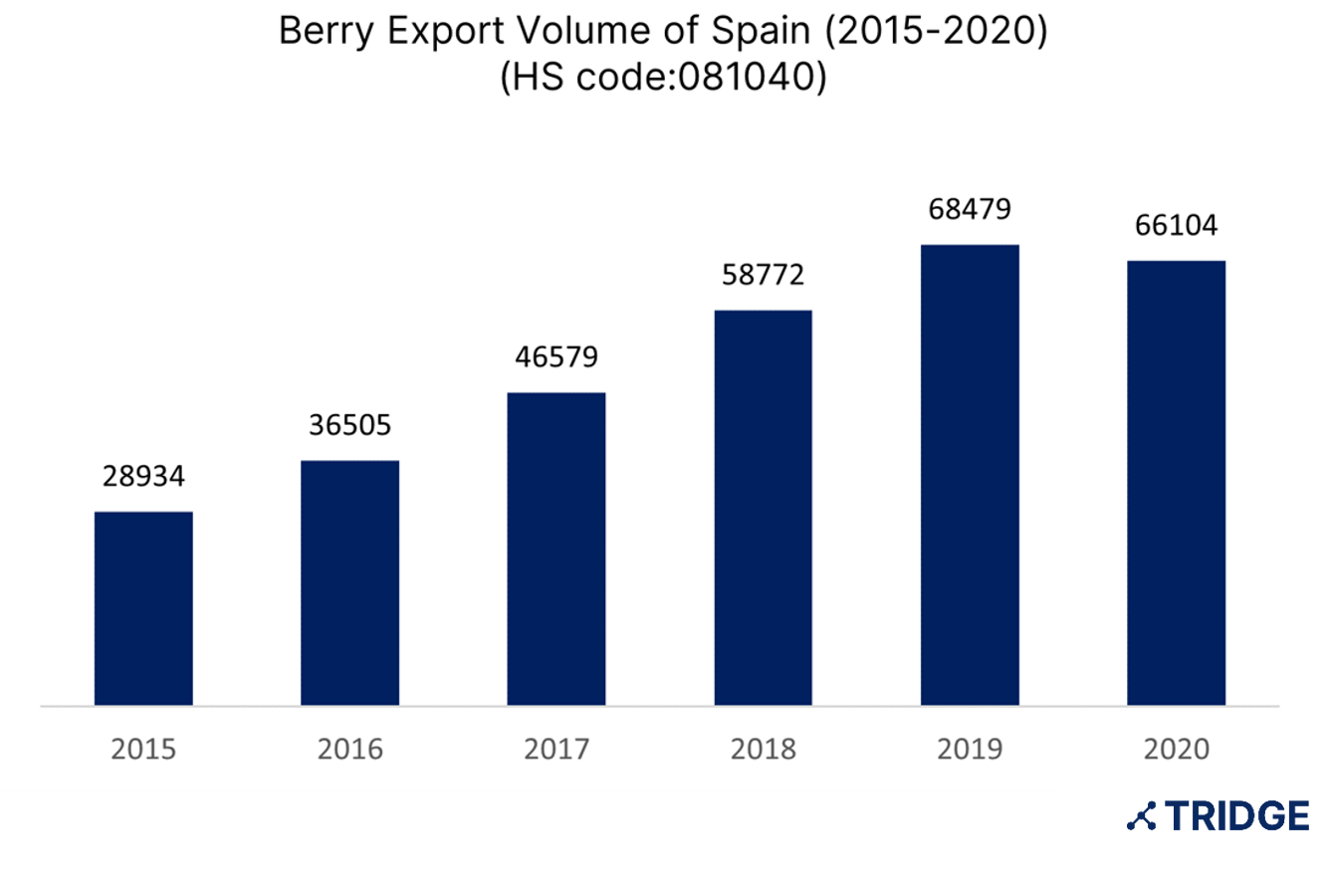Sweet Export Season for Spanish Blueberries

Written in partnership with Ivan Cuadrado, a veteran berry agronomist (Profile available on Tridge Expert Community)
Spanish blueberries entered the market a month later than usual due to storm Filomena that brought along an unusual amount of snowfall during December-January. This then delayed the production process of blueberries, leaving less supplies in the market.
Spain, a major exporter of blueberries
In the global agriculture market, Spain is the fourth largest exporter of berries wherein in 2020, 11% of the global berry exports came from Spain. Its export volume has been consistently increasing from 2015 to 2019, followed by a slight decline in 2020. Germany, UK, the Netherlands, and Poland are the top four destinations for Spanish blueberries. Exports to these key destinations have been increasing consistently during 2016-2020 in both value and volume except for the United Kingdom, which imported 5% less during 2020 than 2016 in terms of value despite a slight increase in import volume.

Source: Trade Map, Tridge

Source: Trade Map, Tridge
Production
90% of the blueberries from Spain are harvested in the Southern region. While Northern blueberries need cold temperatures to grow, Southern blueberries can grow in a warmer environment. Varieties that are exported the most are the Snowchaser and Windsor, the early-season varieties, followed by Ventura, Emerald, Jewel, and Cupla, the midseason varieties, and Star and Alix blue, the late-season varieties. Spain has been showing substantial increases in production year by year. Initially, Spain predicted almost a 40%-50% increase in production for the 2021 season than the previous season. However, as the season nears its end, Ivan Cuadrado, a veteran Spanish blueberry agronomist, estimates the 2021 harvest to be slightly lower or equal to the previous year due to storm Filomena.
Market Dynamics
Cuadrado shared that due to low supply of blueberries in the international market, coupled with delayed harvest in Spain, blueberry prices have been higher than usual. During the last week of May, blueberry farmgate prices reached EUR 3.8/kg (USD 4.63/kg)* which then jumped to EUR 4/kg (USD 4.87/kg)* by the first week of June. Moreover, Peruvian and Chilean importers have increased their order programs with Spanish blueberry suppliers this season. Although these two are also major exporters of blueberries, their harvest season finishes prior to Spain’s peak blueberry harvest season, which allows Spanish blueberries to complement their markets during off-season.
According to Rajjun Sahota, trade expert of Tridge, Spain’s current competitor is the US exporting its early season blueberries from California. In terms of price, Spanish blueberries are more competitive due to lower labor costs and government subsidies (To read more, check out Local Insights).
Additionally, the presence of Spanish blueberries in the international market is expected to increase with the recent Brazilian government’s approval of the fruit to enter its domestic market.
*Currency conversion based on USD 1= EUR 0.82
Sources:
- Fresh Plaza.Brazil greenlights the import of Spanish blueberries.





